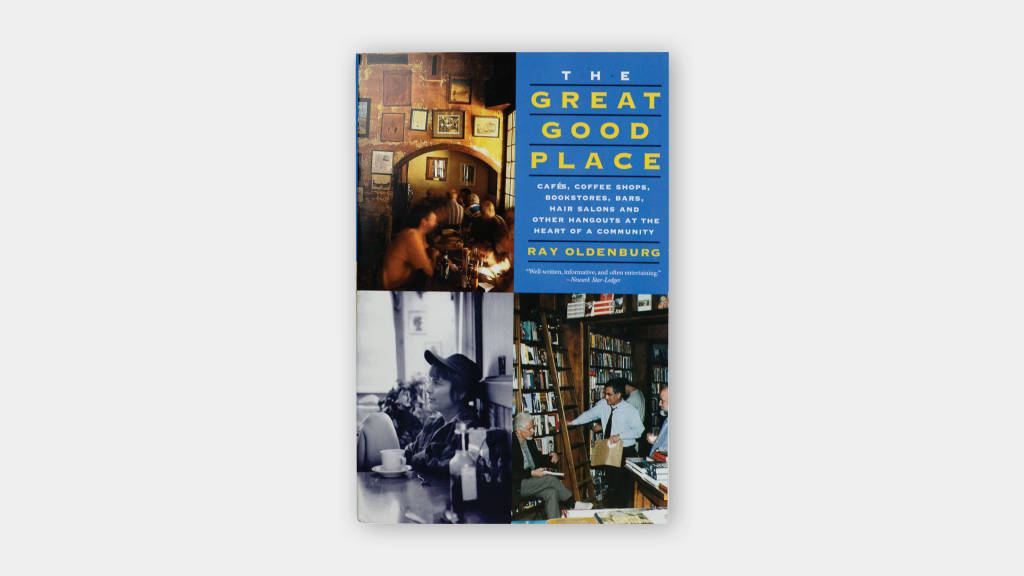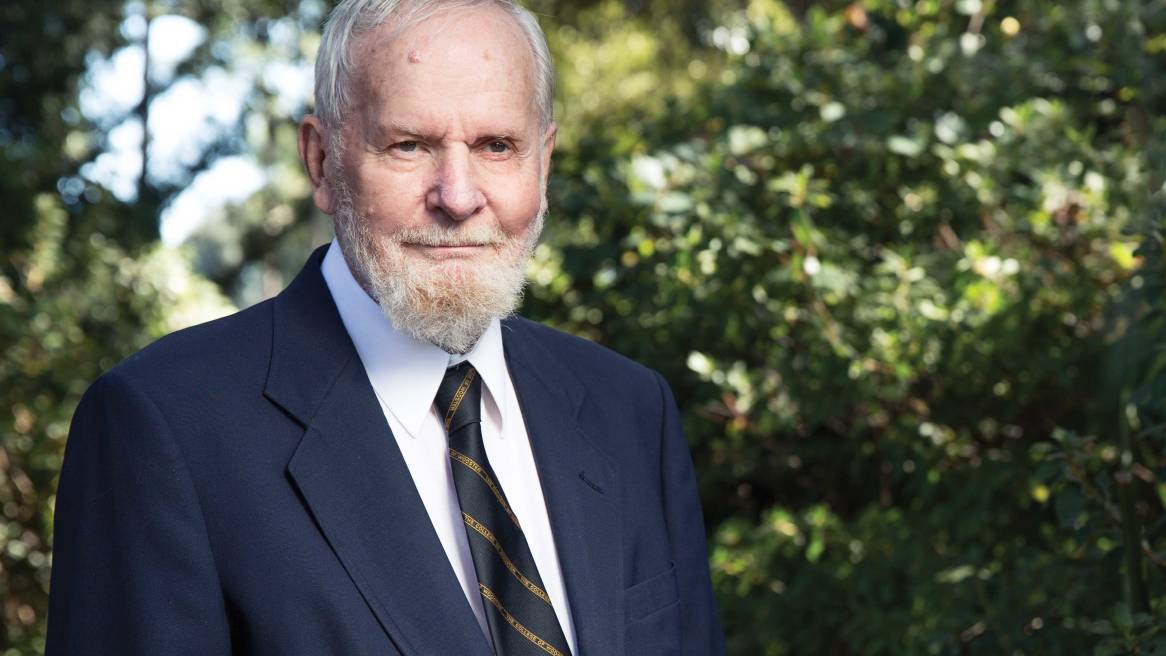Q + A with Ray Oldenburg
The idea of a public, social place outside of home and work has been around for centuries, but it didn’t enter the lexicon as a “third place” until the phenomenon was thoroughly explored by sociologist Ray Oldenburg in his 1989 book, “The Great Good Place.”
360 Magazine talks with the sociologist who defined “Third Places.”
The idea of a public, social place outside of home and work has been around for centuries, but it didn’t enter the lexicon as a “third place” until the phenomenon was thoroughly explored by sociologist Ray Oldenburg in his 1989 book, “The Great Good Place.” It hasn’t left the stage since.
The concept of third places is frequently cited in professional discussions of topics ranging from community and social connections to the importance of place. The book has never gone out of print. Starbucks even asked Oldenburg at one time to endorse their coffee shops. (He declined.)
Separate from first place (home) and second place (work), third places have taken on a new luster in recent years as companies discover the value of third places inside the office: cafés and casual spaces where employees can sip coffee, tea or even a beer, and connect with colleagues in a relaxed, informal environment.
A professor emeritus of sociology at the University of West Florida in Pensacola, Oldenburg says his book, eight years in the making, was inspired by a move to a Florida subdivision.

How did moving to Pensacola inspire “The Great Good Place”?
Our first house was in a new neighborhood with a lot of young people and we all got together regularly. We didn’t let it get to be the sort of private, exclusive neighborhood that’s so common in subdivisions now. Our second and current home is in a subdivision and it’s got privacy built into it like you can’t believe. I thought, why do we even have sidewalks? There’s never anybody on them. The mayor of Charleston used to say that Americans don’t know how to build citi5es. A livable city should have the daily necessities within walking distance, and we’ve moved so far from that. We have to get in the car for everything.
So what did you do?
I converted our two-car garage into a bar, created my own third place. I lucked onto a genuine mahogany cabinet and stocked it with liquor. The refrigerator is full of beer, there’s a little wine fridge, and so on. I don’t like to drink that much anymore but I like to think I’m a decent host. We have regular hours, Wednesday and Sunday. All sorts of people come over: the library staff at the university, a brother-in-law, a retired physician and many others.
What’s surprised you most about third places in the last 25 years?
The biggest surprise is that the business world picked up on them. Corporations used to believe that the longer they could keep each employee at the desk, the more productive they’d be. That’s just been shot to pieces. Managers found out that if they let people work where they want and when they want, productivity went up. The marketplace is highly competitive and it’s important to be first with new innovations. If you get people sitting together, talking together, innovation comes quicker. And I think that’s going to be the thing for business and industry for a long time.
“Managers found out that if they let people work where they want and when they want, productivity went up.”
What are the most important third places today?
Libraries, fellowship halls and churches, remodeled YMCAs and coffee houses that are affordable to anyone. When I traveled I would always get off the main highway 20 to 30 minutes before I intended to stop because that would bring me into a place where things were real and local. And you sometimes regretted the food you got, but mainly you were glad it was there.
Is social media a new form of third place?
Third places are face-to-face phenomena. The idea that electronic communication permits a virtual third place is misleading. “Virtual” means that something is like something else in both essence and effect, and that’s not true in this instance. When you go to a third place you essentially open yourself up to whoever is there. And they may be very different from you. If you don’t know your neighbors, you will be suspicious. And if you are suspicious, you will act accordingly. You don’t get neighborly on that basis. If you spend time with people you’re not going to hate them, it’s just that simple.
Do you think businesses should do more to encourage more third places?
I would think that that would have some part in holding on to good people. Making sure they get what makes them happy and so on. And I think it should make a difference for the company, that people have that opportunity. It’s a step toward increasing diversity and interaction within that diverse world. And by diversity I mean a lot things:race, religion, ethnicity, what part of the country you came from, the socio-economic differences, so many things that make people different from one another, and interesting to one another.
How beneficial are internal third places located inside workplaces?
Does the coffee bring people together? You bet it does. But people still need to get away sometimes. A lot of friendships and good relationships can be had at work, but I don’t think you can limit yourself to that. Third places out in the publi realm have diverse occupants, and that’s better for the development of the individual. They provide places where diversity can be far more comfortably experienced. Human beings are social animals, and happy individuals exist amidst other happy individuals. If you have a third place you have more friends. You live longer the more friends you have. Companies would do well to encourage third places in their neighborhoods. Making sure employees have an opportunity to get away can help them hold on to good people.
10 Functions of Third Places
Ray Oldenburg has identified 10 important functions of great, good places. As more company work environments include what might be called internal third places (on-site cafés, coffee and juice bars, other gathering places), we wonder: Do they provide some of the same functions as external third places? We’ve starred the ones we think apply.
1
Promoting Democracy
As John Dewey once put it, “The heart and final guarantee of democracy is in the free gatherings of neighbors on the street corners to discuss back and forth and converse freely with one another.”
2*
Neighborhood Unity
Local gathering places allow people to get to know others in the neighborhood. Bonds are formed. People learn who can be counted on for what. Suspicion of neighbors is eliminated.
3*
Multiple Friendships
The only way one can have many friends and meet them often is to have a neutral-ground gathering place nearby. The more friends people have, the longer they live.
4
Spiritual Tonic
Joie de vivre or la dolce vita cultures derive from frequent sociability in the public realm. These are most easily identified by an abundance of sidewalk cafés in their cities.
5
Staging Area
When Hurricane Andrew hit Florida, many people, eager to help, didn’t know where to go as there were no gathering places in the neighborhoods. In times of disaster, unofficial aid comes well before official aid and is often of greater importance. Third places, in this context, allow people to help one another.
6*
Generation of Social Capital
People with diverse skills and interests come to know and trust one another. This has a positive effect on the economy. In the Old South, regions that permitted taverns were better off economically than regions that did not permit them.
7
Lower Cost of Living
Third places typically bring together diverse occupations, talents and skills. What a person needs help with is one of the first topics of conversation in the group, and if one or more members of the group can lend a helping hand, tool or advice, they will. Most of the people one meets in a third place may be categorized a “weak ties,” and in many ways they are more helpful than close friends, for example, in finding a job.
8
Enhanced Retirement
The need to “get out of the house” after retirement can be met daily if there is a nearby third place.
9*
Development of the Individual
The location of the home and the nature of the workplace keep us in regular contact with people who are similar to us. Third places bring together people of different occupations, backgrounds, socio-economic standing and viewpoints. From these people we learn about the world we live in and how to get along better in it.
10*
Intellectual Forum
The issues of the day and many other matters are discussed regularly and informally, but not chaotically. Participants learn to think well before it’s their turn to speak, and ill-considered typically illicit a chorus of disapproval.
Go Deeper
If you want to learn more about Ray Oldenburg and his perspective on third places visit:


